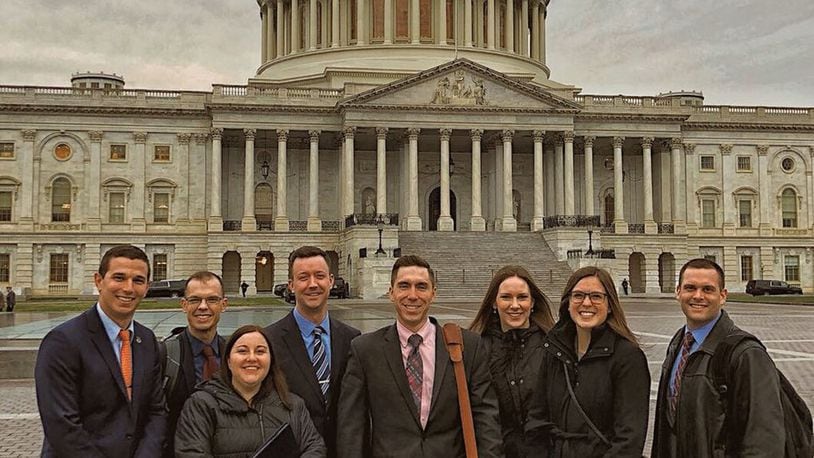Col. Terri Quick, AFLCMC vice commander, said that the ATAC program makes a difference.
“Not only does ATAC help the center develop our future Air Force acquisition leaders, but it also provides our young acquisition professionals with the opportunity to focus on their personal leadership skills,” Quick said.
Designed to promote leadership development and problem solving, the program gave the team a large amount of responsibility and autonomy, as well as access to educational opportunities at the Defense Acquisition University, Georgetown University’s Government Affairs Institute, the Air Force Institute of Technology and the University of Tennessee.
From their research, the team discovered a number of challenges to sustaining legacy aircraft, including – but not limited to – a diminishing pool of interested and qualified vendors for obsolete parts, inconsistent quality of parts received from supply decreasing aircraft availability, overdependence on industry for sustainment of aircraft avionics and software, inadequate technical data and data rights, limited/outdated maintenance infrastructure, and sustainment being a lower priority/first tradeoff during acquisition.
“A lot of the aging aircraft platforms run into issues as they get older,” said Capt. Michael Meoli, director of operations for Europe/NATO/Africa Foreign Military Sales with the Air Force Security Assistance Cooperation Directorate and a member of ATAC-4. “For instance, the KC-135 was originally only supposed to be around for 10 years, and here we are more than 60 years later, and we are still sustaining it and we are running into issues. Parts break and we say, ‘Hey, we need to replace this part,’ but the part doesn’t exist anymore, and we have to figure out what to do. The KC-135 is not the only aircraft [with these issues]; the B-52 has been around for a while, and so has the A-10.”
A few of the team’s recommendations include minimizing the sustainment footprint by investing in agile/low-cost attritable systems, in pertinent mission areas, and continue/increase investment in technology research and development across the enterprise in areas like additive manufacturing, non-destructive inspection/repair and augmented reality.
The team also recommended that a strategic diminishing manufacturing sources/material shortages task force be created to draw connections/integrate programs and increase awareness of small-scale organic and commercial capabilities.
The team was able to present its recommendations for consideration to Lt. Gen. Arnold Bunch, military deputy, Office of the Assistant Secretary of the Air Force for Acquisition, Technology and Logistics; Gen. Ellen Pawlikowski, commander, Air Force Materiel Command; and Lt. Gen. Robert McMurry, AFLCMC commander.
Members of ATAC-4 said the program was very beneficial and enlightening.
“ATAC allowed us to get our head above the ‘waves’ and see things from a global perspective,” said Justin Kyne, a contracting officer in AFLCMC’s Mobility Directorate and ATAC-4 member. “It allowed us to understand the interplay between Congress and what we do and gave us a better understanding of team dynamics. We learned a lot.”
First Lt. Claire Krokker, an A-10 avionics engineer from Hill Air Force Base, also highlighted ATAC’s impact.
“It was an amazing program,” said Krokker. “It opened our eyes to a lot of good things happening in the Air Force. Our team was great. It was fun to challenge each other to be the best version of ourselves. I think that we will all go back out to our program offices and ‘light the fire’ from the bottom.”
Planning actions are already underway for ATAC - Team Five which is projected to begin in late August.
The following individuals were members of ATAC - Team Four:
- Justin Kyne, Mobility Directorate, AFLCMC
- Capt. Michael Meoli, AFSAC
- Lisa Myers, AFSAC
- 1st Lt. Claire Krokker, Fighters and Bombers Directorate, AFLCMC
- Zach Thompson, Fighters and Bombers Directorate, AFLCMC
- Capt. Michael Rubanka, Tanker Directorate, AFLCMC
- Jennifer Schmitt, Tanker Directorate, AFLCMC
- Capt. Gilbert Rayhill, Space and Missile Systems Center, AF Space Command
About the Author
